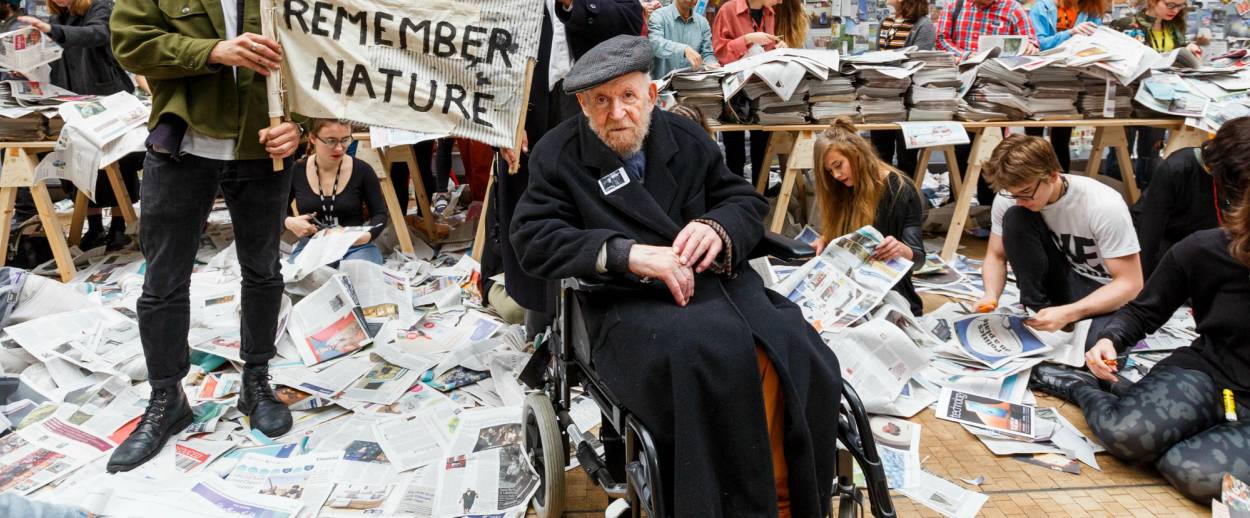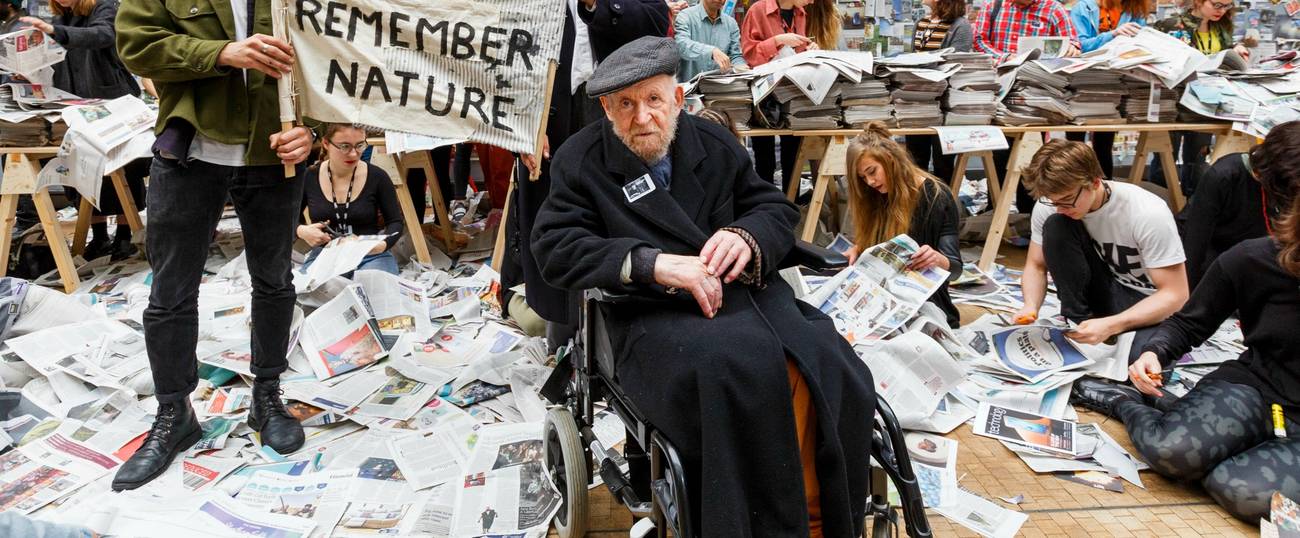Gustav Metzger, Pioneer of ‘Auto-Destructive Art’, Dies at 90
In 1939, Metzger escaped the Nazis on a Kindertransport. His radical anti-art, or ‘aesthetics of revulsion,’ often dealt with the rejection of power.




Gustav Metzger, one of the most provocative and politically-minded anti-artists of the late 20th century, died last week in London, the city where he arrived as a 13-year-old in 1939 on a Kindertransport from Nazi Germany.
Born in Nuremburg to Orthodox Jewish parents from Poland, both of whom were murdered during the Shoah, Metzger was an artist who took literally Theodor Adorno’s infamous and much misunderstood dictum that “to write poetry after Auschwitz would be barbaric,” turning from abstract painting to what he called “auto-destructive art,” a one-person movement he founded in 1959. (In a sense Metzger followed the path of his teacher, the painter David Bomberg, who, having experienced the horrors of World War I, shifted from modernist painting to something more raw and socially engaged.)
“When I saw the Nazis march, I saw machine-like people and the power of the Nazi state,” Metzger maintained. “Auto-destructive art is to do with rejecting power.”
He described his early exhibits—they included bags of trash; discarded cardboard boxes that had once held television sets; bundles of old newspaper as well as sheets of glass timed to crash down on a concrete; plans for self-destroying sculptures; and nylon canvases that dissolved as the artist sprayed them with corrosive hydrochloric acid—as a “public art for industrial societies,” a calculated “attack on art dealers and collectors who manipulate modern art for profit.”
In promoting his “aesthetics of revulsion,” Metzger was a tireless organizer—he was active in the campaign for nuclear disarmament—and a polemicist. He lectured widely and taught at London’s Ealing Art College where his most celebrated student was Pete Townshend of The Who, notorious for destroying his guitar in concert and also projecting images of Metzger’s less confrontational liquid crystal “auto-creative” work in performance. Metzger’s art-world notoriety peaked in 1966 when he co-organized a three-day Destruction in Art Symposium at the Africa Centre in London. Participants included Yoko Ono and the Viennese aktion artist Hermann Nitsch’s Orgies Mystery Theater whose performance involving the crucifixion of a lamb carcass resulted in Metzger being fined a hundred pounds for having presented an “indecent exhibition.”
After declaring a three-year art strike (in which he appeared to be the only participant), Metzger returned with work showing a new interest in environmental destruction. Like the similarly barbaric “No!Art” produced by his New York-based contemporary Boris Lurie (1924-2008), the Russian-born survivor of four Nazi concentration camps, another artist who worked with mass-produced detritus, Metzger used documentary images of the Holocaust in disturbing, confrontational contexts. His “Historic Photographs” are giant blow-ups of iconic 20th century traumas, including the liquidation of the Warsaw Ghetto, the bombing of Vietnamese children, and a 1990 massacre on the Temple Mount, which, as they are partially concealed, oblige gallery goers to viscerally engage with the work by, for example, squeezing into a narrow corridor to see the ramp at Auschwitz.
When the Historic Photographs were exhibited at the New Museum in 2011, people were invited to crawl beneath a yellow tarp to find a huge 1938 photograph of Viennese Jews on their knees compelled to scrub a street under the gaze of laughing Nazi supporters. The New York Times critic was properly appalled. “What purpose and whose interests are served by an exhibition that treats its viewers with such contempt?” I imagine that was Metzger’s point.
J. Hoberman was the longtime Village Voice film critic. He is the author, co-author, or editor of 12 books, including Bridge of Light: Yiddish Film Between Two Worlds and, with Jeffrey Shandler, Entertaining America: Jews, Movies, and Broadcasting.